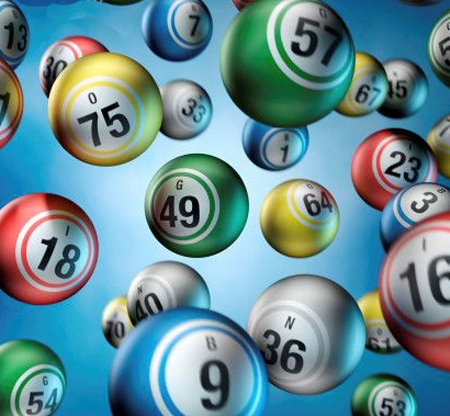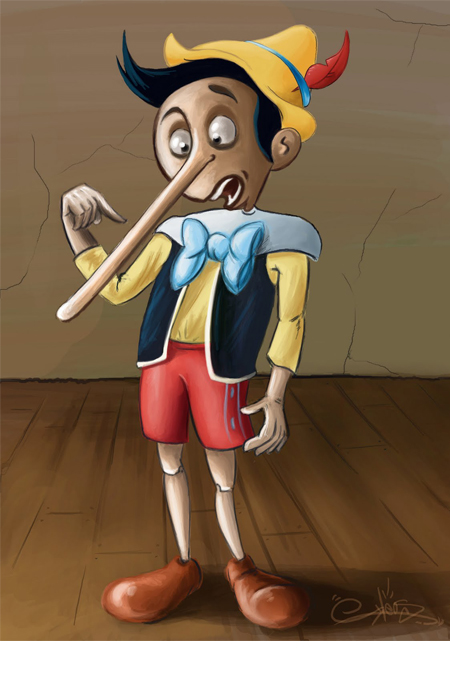10 Paradoxes That Will Totally Surprise You (Video
10 Paradoxes That Will Totally Surprise You (Videos)
(N.Morgan) An interesting look into the paradoxes of our universe. A paradox is a statement that apparently contradicts itself and yet might be true. Most logical paradoxes are known to be invalid arguments, but they are still valuable in promoting critical thinking. Read on to discover ten paradoxes that will totally surprise you.
 The Paradox of Value: Why is water cheaper than diamonds, since humans need water, not diamonds, to survive?
The Paradox of Value: Why is water cheaper than diamonds, since humans need water, not diamonds, to survive?
The paradox of value (also known as the diamond–water paradox) is the apparent contradiction that, although water is on the whole more useful in terms of survival, diamonds command a higher price on the market. At low levels of consumption, water has a much higher marginal utility than diamonds and thus is more valuable. People usually consume water at much higher levels than they do diamonds, and thus the marginal utility and price of water are lower than that of diamonds.
In explaining the diamond-water paradox, marginalists explain that it is not the total usefulness of diamonds or water that matters, but the usefulness of each unit of water or diamonds. It is true that the total utility of water to people is tremendous because they need it to survive. However, since water is in such large supply in the world, the marginal utility of water is low. In other words, each additional unit of water that becomes available can be applied to less urgent uses as more urgent uses for water are satisfied.
Therefore, any particular unit of water loses value as the supply of water increases. On the other hand, diamonds are in much lower supply. They are of such low supply that the usefulness of one diamond is greater than the usefulness of one glass of water, which is in abundant supply. Thus, diamonds are worth more to people. Therefore, those who want diamonds are willing to pay a higher price for one diamond than for one glass of water, and sellers of diamonds ask a price for one diamond that is higher than for one glass of water. (Link)
 The Grandfather Paradox: What if you travel in time and kill your grandfather before he meets your grandmother?
The Grandfather Paradox: What if you travel in time and kill your grandfather before he meets your grandmother?

The grandfather paradox is a proposed paradox of time travel that was first described by the science fiction writer René Barjavel in his 1943 book Le Voyageur Imprudent (Future Times Three).
The paradox is described as follows: the time traveler went to the past to a moment when his grandfather and grandmother had not married yet. At that time, the traveler kills his grandfather and, therefore, is never born. If he is never born, then he is unable to travel through time and kill his grandfather, which means that he would be born, and so on.
Assuming the causal link between the time traveler’s present and future, the grandfather paradox that disrupts that link may be regarded as impossible (thus precluding the arbitrary alteration of one’s fate). However, a number of hypotheses have been postulated to avoid the paradox, such as the idea that the past is unchangeable, so the grandfather must have already survived the attempted killing (as stated earlier); or the time traveler creates—or joins—an alternate timeline or parallel universe in which the traveler was never born.
A variant of the grandfather paradox is the Hitler paradox, or Hitler’s murder paradox, a fairly frequent trope in science fiction in which the protagonist travels back in time to murder Adolf Hitler before he can instigate World War II. Rather than necessarily preventing time travel, the action removes any reason for the travel, along with any knowledge that the reason ever existed, thus removing any point in travelling in time in the first place.
 Theseus Paradox: When you have replaced all the parts of a ship, is it still the same ship?
Theseus Paradox: When you have replaced all the parts of a ship, is it still the same ship?

The ship of Theseus is a paradox that raises the question of whether an object which has had all of its components replaced remains fundamentally the same object.
The paradox has been discussed by ancient philosophers and, more recently, by Thomas Hobbes and John Locke. Some say, “It remained the same,” while some say, “It did not remain the same.”
Based on this theory, it is concluded that the body we are seeing in the mirror is completely different from that seen over the last seven years or more since human cells regenerate approximately every seven years. (Link)
 Galileo’s Paradox: Although not all numbers are square numbers, there are no more numbers than square numbers
Galileo’s Paradox: Although not all numbers are square numbers, there are no more numbers than square numbers

Galileo’s paradox is a demonstration of one of the surprising properties of infinite sets. In his final scientific work Two New Sciences, Galileo apparently made contradictory statements about the positive integers.
First, some numbers are squares, while others are not; therefore, all the numbers, including both squares and non-squares, must be more numerous than just the squares. Yet, for every square there is exactly one positive number that is its square root, and for every number there is exactly one square; hence, there cannot be more of one than the other. This is an early use, though not the first, of the idea of one-to-one correspondence in the context of infinite sets. Galileo concluded that the ideas of less, equal, and greater apply to finite sets, but not to infinite sets.
In the nineteenth century, using the same methods, the German mathematician Georg Cantor, who is best known as the inventor of set theory, showed that this restriction is not necessary. It is possible to define comparisons amongst infinite sets in a meaningful way (by which definition the two sets he considers, integers and squares, have “the same size”), and that by this definition some infinite sets are strictly larger than others. It is, nonetheless, remarkable the extent by which Galileo anticipated later work on infinite numbers. He showed that the number of points in a line segment is the same as the number in a larger line segment, but he didn’t discover Cantor’s proof that this is greater than the number of integers. (Link)
 The Paradox of Saving: If everyone tries to save during a recession, aggregate demand will fall and the population’s total savings will be lower.
The Paradox of Saving: If everyone tries to save during a recession, aggregate demand will fall and the population’s total savings will be lower.

The paradox thrift, or paradox of saving, states that if everyone tries to save more money during times of economic recession, then aggregate demand will fall and will, in turn, lower total savings in the population because of the decrease in consumption and economic growth. The paradox is, narrowly speaking, that total savings may fall even when individual savings attempt to rise, and, broadly speaking, that increase in savings may be harmful to an economy because while individual thrift is generally averred to be good for the economy, the paradox of thrift holds that collective thrift may be bad for the economy. Hypothetically, if all people will save their money, savings will rise, but there is a tendency that the macroeconomic status will fall.
 The Pinocchio Paradox: What if Pinocchio said, ‘My nose grows now.’?
The Pinocchio Paradox: What if Pinocchio said, ‘My nose grows now.’?

The Pinocchio paradox arises when Pinocchio says, “My nose grows now,” and it is a version of the liar paradox.
The liar paradox is defined in philosophy and logic as the statement “This sentence is false.” Any attempts to assign a classical binary truth value to this statement leads to a contradiction, or paradox. This occurs because if the statement “This sentence is false” is true, then it is false; this would mean that it is technically true, but also that it is false, and so on without end.
Although the Pinocchio paradox belongs to the liar paradox tradition, it is a special case because it has no semantic predicates, as “My sentence is false” does, for example.
The Pinocchio paradox has nothing to do with Pinocchio being a known liar. If Pinocchio were to say, “I am getting sick,” this could be either true or false, but Pinocchio’s sentence “My nose grows now” can be neither true nor false; hence this and only this sentence creates the Pinocchio (liar) paradox. (Link)
 The Barber’s Paradox: In a village where the barber shaves everyone who does not shave himself, who shaves the barber?
The Barber’s Paradox: In a village where the barber shaves everyone who does not shave himself, who shaves the barber?

Suppose you walk past a barber’s shop one day and see a sign that reads, “Do you shave yourself? If not, come in and I’ll shave you! I shave anyone who does not shave himself, and no one else.” This seems fair enough, and fairly simple, until the following question occurs to you – does the barber shave himself? If he does, then he mustn’t, because he doesn’t shave men who shave themselves, but then he doesn’t, so he must, because he shaves every man who doesn’t shave himself… and so on. Both possibilities lead to a contradiction.
This is the Barber’s Paradox, which was introduced by the British mathematician, philosopher, and conscientious objector Bertrand Russell at the beginning of the twentieth century. It exposed a huge problem which changed the entire direction of twentieth century mathematics.
In the Barber’s Paradox, the condition is “shaves himself,” but the set of all men who shave themselves can’t be constructed, even though the condition seems straightforward enough, because we can’t decide whether the barber should be in or out of the set. Both conditions lead to contradictions.
Attempts to find ways around the paradox have centered on restricting the types of sets that are allowed. Russell himself proposed a “Theory of Types” in which sentences were arranged hierarchically. At the lowest level are sentences about individuals. At the next level are sentences about sets of individuals; at the next level are sentences about sets of individuals, and so on. This avoids the possibility of having to talk about the set of all sets that are not members of themselves, because the two parts of the sentence are of different types – that is, at different levels.
For this and other reasons, the most favored escape from Russell’s Paradox is the so-called Zermelo-Fraenkel axiomatisation of set theory. This axiomatisation restricts the assumption of naïve set theory, which states that, given a condition, you can always make a set by collecting exactly the objects satisfying the condition. Instead, you start with individual entities, make sets out of them, and work upwards. This means that you do not have to suppose that there is a set of all sets, which means you don’t have to try to divide that set up into those sets that contain themselves and those which don’t. You only have to be able to make this division for the elements of any given set, which you have built up from individual entities via some number of steps. A possible (sexist) solution: Just make the barber a woman. (Link)
 Birthday Paradox: How can such a small group have two people with the same birthday?
Birthday Paradox: How can such a small group have two people with the same birthday?
The birthday paradox concerns the probability that, in a set of randomly chosen people, some pair of them will have the same birthday. By the pigeonhole principle, the probability reaches 100% when the number of people reaches 367 (since there are 366 possible birthdays, including February 29). However, 99% probability is reached with just 57 people, and 50% probability with 23 people. These conclusions include the assumption that each day of the year (except February 29) is equally probable for a birthday. (Link)
 The Paradox of the Chicken or the Egg: Which came first, the chicken or the egg?
The Paradox of the Chicken or the Egg: Which came first, the chicken or the egg?

The chicken or the egg causality dilemma is commonly stated as “which came first, the chicken or the egg?” To ancient philosophers, the question about the first chicken or egg also evoked the questions of how life and the universe in general began.
Cultural references to the Chicken and Egg intend to point out the futility of identifying the first case of a circular cause and consequence. It could be considered that in this approach lies the most fundamental nature of the question. A literal answer is somewhat obvious to some people, as egg-laying species pre-date the existence of chickens. To others, the chicken came first, seeing as chickens are merely domesticated Red Junglefowls. However, the metaphorical view sets a metaphysical ground to the dilemma. To better understand its metaphorical meaning, the question could be reformulated as: “Which came first, X that can’t come without Y, or Y that can’t come without X?” When the Earth was created many years ago, the chicken was created. Then it laid an egg. If the egg came first, and it hatched, who was there to warm it, and who was there to feed it when it was a little chick? (Link)
 The Paradox of the Missing Square Puzzle: Why does a square appear for no reason?
The Paradox of the Missing Square Puzzle: Why does a square appear for no reason?

The missing square puzzle is an optical illusion used in mathematics classes to help students understand geometrical figures. It depicts two arrangements made of similar shapes in slightly different configurations.
The key to the puzzle is the fact that neither of the “triangles” is truly a triangle, because what appears to be the hypotenuse is bent. In other words, the “hypotenuse” does not maintain a consistent slope, even though it may appear that way to the human eye. So, with the bent hypotenuse the first figure actually occupies a combined 32 units, while the second figure occupies 33, including the “missing” square. Note the grid point where the red and blue triangles in the lower image meet (5 squares to the right and two units up from the lower left corner of the combined figure), and compare it to the same point on the other figure; the edge is slightly under the mark in the upper image, but goes through it in the lower. Overlaying the hypotenuses from both figures results in a very thin parallelogram with an area of exactly one grid square—the same area “missing” from the second figure. (Link)


